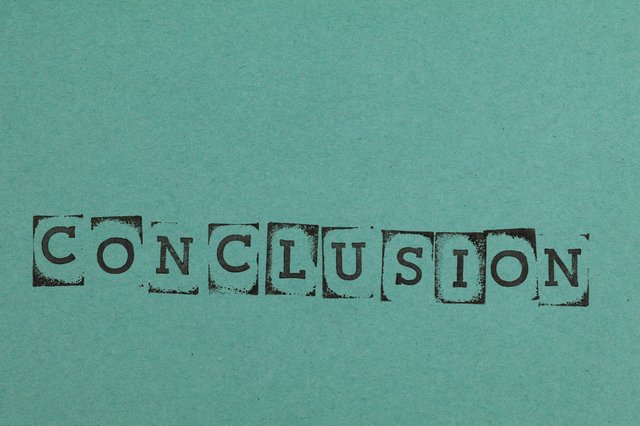The Latest Trends in Nudify Technology: A Double-Edged Sword
Nudify technology, a subset of deepfake technology, has rapidly evolved, presenting both exciting opportunities and significant ethical challenges. As AI continues to advance, so too does the sophistication of these tools, raising concerns about privacy, consent, and the potential for misuse. In this article, we delve into the latest trends in nudify technology, examining the implications and exploring the ethical considerations surrounding its development and application.
Contents
- The Latest Trends in Nudify Technology: A Double-Edged Sword
- The Evolution of Nudify Technology
- 1. Enhanced Realism Through Generative Adversarial Networks (GANs)
- 2. Real-Time Nudify Capabilities
- 3. Accessibility and User-Friendly Interfaces
- 4. Advances in Multi-Language and Cross-Cultural Applications
- 5. Integration with Deepfake Technology
- 6. Emergence of Detection Tools
- 7. Increased Ethical Scrutiny
- 8. Regulatory Developments
- 9. Applications beyond Misuse
- 10. Collaborative Efforts for Solutions
- The Future of Nudify Technology
- Conclusion
- FAQs
- 1. What are nudify tools, and how do they work?
- 2. Why are nudify tools a concern?
- 3. How can we mitigate the risks associated with nudify technology?
The Evolution of Nudify Technology

The initial iterations of nudify tools were relatively crude, often relying on simple image manipulation techniques. However, recent advancements in AI, particularly in the areas of generative adversarial networks (GANs) and neural networks, have enabled the creation of increasingly realistic and convincing deepfakes.
- Real-time Deepfakes: One of the most significant trends is the development of real-time deepfake technology, which can manipulate live video feeds in real time. This has implications for live streaming, video conferencing, and social media platforms.
- Text-to-Image Generation: AI models can now generate highly realistic images from textual descriptions. This technology can be used to create deepfakes of individuals without requiring any existing images or videos.
- Audio Deepfakes: In addition to visual manipulation, AI can also be used to manipulate audio recordings, making it possible to create deepfake audio that can be used to impersonate individuals or spread misinformation.
1. Enhanced Realism Through Generative Adversarial Networks (GANs)

One of the most prominent trends in nudify technology is the use of generative adversarial networks (GANs) to create highly realistic images. GANs consist of two neural networks—a generator and a discriminator—that work together to produce and refine images.
- Generator: Creates synthetic images based on input data.
- Discriminator: Evaluates the generated images for realism and accuracy.
This adversarial process continues until the generated images are indistinguishable from real photographs. Advances in GAN architecture have led to an unprecedented level of detail, including accurate skin textures, lighting, and seamless blending of alterations into the original image.
Implications: While the technological achievement is remarkable, the enhanced realism increases the risk of misuse. These hyper-realistic images are difficult to distinguish from authentic ones, complicating detection and verification processes.
2. Real-Time Nudify Capabilities

Another emerging trend is the development of real-time nudify tool. Unlike earlier versions that required time-consuming processing, modern applications leverage faster algorithms and cloud-based computing to produce results in seconds.
- Streaming Integration: Some tools now claim to offer live nudify capabilities for video streams, raising significant privacy and ethical concerns.
- AI Acceleration: Use of dedicated AI chips and optimized frameworks enables real-time processing, even on mobile devices.
Implications: While real-time functionality showcases technological progress, it amplifies risks. The ability to manipulate live feeds opens the door to invasive surveillance, harassment, and potential abuse in both personal and professional settings.
3. Accessibility and User-Friendly Interfaces
Modern nudify tools are becoming increasingly accessible, with developers focusing on creating user-friendly interfaces that require little to no technical expertise. Features include:
- Drag-and-Drop Functionality: Users can upload an image and receive results with minimal input.
- AI-Powered Automation: Sophisticated algorithms handle complex tasks like object recognition and image segmentation without user intervention.
- Mobile Apps: Nudify technology has moved from desktop applications to mobile apps, making it more portable and convenient.
Implications: Lowering the technical barrier makes the technology more widely available, increasing the potential for misuse. However, it also raises questions about developer responsibility and the ethical considerations of creating such accessible tools.
4. Advances in Multi-Language and Cross-Cultural Applications
Developers are localizing nudify tools to cater to a global audience, incorporating:
- Multi-Language Support: Interfaces and user guides in multiple languages.
- Cultural Adaptation: Training AI models on datasets that reflect diverse cultural norms and aesthetics.
Implications: While localization broadens the reach of these tools, it also complicates efforts to regulate their use. Cultural variations in ethics and legality further challenge the creation of universal guidelines.
5. Integration with Deepfake Technology
Nudify tools are increasingly being combined with deepfake technology, which uses AI to swap faces or modify identities in videos and images. This integration has led to:
- Enhanced Manipulation: The ability to create fully altered images or videos that incorporate nudity while maintaining the original subject's likeness.
- Dynamic Applications: The creation of nudify content that includes motion and speech, making detection even more difficult.
Implications: Deepfake integration amplifies the ethical and legal challenges associated with nudify technology. The creation of fake explicit content can cause severe emotional and reputational damage to victims, often with limited legal recourse.
6. Emergence of Detection Tools
In response to the misuse of nudify technology, researchers and developers are creating tools to detect manipulated content. These tools utilize:
- AI-Based Analysis: Algorithms that identify subtle inconsistencies in image composition or metadata.
- Blockchain Authentication: Embedding digital signatures in authentic images to verify their integrity.
- Collaborative Databases: Sharing information about known manipulated content to aid in detection.
Implications: While detection tools represent a positive step toward combating misuse, they often lag behind the rapidly evolving capabilities of nudify technology. A continuous arms race between developers of manipulation tools and detection technologies is likely.
7. Increased Ethical Scrutiny
The rise of nudify technology has led to heightened ethical discussions among developers, researchers, and policymakers. Key trends include:
- Ethical AI Development: Many organizations are adopting frameworks to ensure responsible AI use.
- Public Awareness Campaigns: Efforts to educate users about the risks and consequences of misusing such tools.
- Collaborative Guidelines: Initiatives to establish industry-wide standards for ethical AI development and deployment.
Implications: While ethical scrutiny is increasing, enforcement remains a challenge. Developers must balance innovation with responsibility, ensuring their tools do not cause harm.
8. Regulatory Developments
Governments and legal bodies worldwide are beginning to address the misuse of nudify technology through new regulations. Trends include:
- Laws Targeting Non-Consensual Content: Criminalizing the creation and distribution of manipulated explicit images without consent.
- AI Governance Frameworks: Requiring developers to conduct ethical impact assessments and implement safeguards against misuse.
- Global Cooperation: Cross-border collaboration to address the international nature of online misuse.
Implications: While regulation is a crucial step, it often lags behind technological advancements. Policymakers must work closely with technologists to stay ahead of emerging challenges.
9. Applications beyond Misuse
Despite the controversies, nudify technology have potential applications beyond malicious use, including:
- Virtual Fashion Design: Generating realistic models for clothing design without needing human subjects.
- Medical Imaging: Creating detailed anatomical visualizations for educational or diagnostic purposes.
- Artistic Experimentation: Enabling artists to explore human form and aesthetics in new ways.
Implications: Exploring these applications requires stringent ethical oversight to prevent unintended consequences or misuse.
10. Collaborative Efforts for Solutions
Addressing the challenges posed by nudify technology requires collaboration among stakeholders, including:
- Developers: Implementing safeguards and promoting responsible use.
- Governments: Creating and enforcing effective regulations.
- Non-Governmental Organizations (NGOs): Advocating for victims and raising awareness about risks.
- Users: Exercising caution and reporting misuse.
Implications: A collective effort can help mitigate the risks associated with nudify technology while harnessing its potential for legitimate applications.
The Future of Nudify Technology
The future of nudify technology is uncertain. While it has the potential for creative and innovative applications, its misuse poses significant risks. By understanding the ethical implications and taking proactive steps to mitigate the dangers, we can harness the power of AI for good while safeguarding individual rights and societal values.
Conclusion

Nudify technology is a powerful tool that can be used for both positive and negative purposes. As this technology continues to evolve, it is essential to remain vigilant and to address the ethical challenges head-on. By working together, we can ensure that AI is used to benefit society and minimize the risks associated with its misuse.
FAQs
1. What are nudify tools, and how do they work?
Nudify tools, a subset of deepfake technology; utilize advanced AI techniques to manipulate existing images or videos. By analyzing vast datasets of human bodies and clothing, these tools can generate highly realistic, often explicit, deepfakes. These tools leverage techniques like GANs (Generative Adversarial Networks) to create highly convincing synthetic media.
2. Why are nudify tools a concern?
Nudify tools pose significant ethical and societal risks:
- Privacy Violations: Creating deepfakes without consent is a severe privacy breach.
- Reputation Damage: Deepfakes can damage an individual's reputation, leading to social ostracism, job loss, and other negative consequences.
- Disinformation and Misinformation: Deepfakes can be used to spread false information and manipulate public opinion.
- Cyberbullying and Harassment: Deepfakes can be used to harass and bully individuals, particularly women and marginalized groups.
3. How can we mitigate the risks associated with nudify technology?
Addressing the ethical challenges requires a multi-faceted approach:
- Technological Countermeasures: Developing robust detection and prevention tools, such as AI-powered detection algorithms and content moderation tools.
- Stronger Legal Frameworks: Enacting laws to criminalize the creation and distribution of non-consensual deepfakes.
- Digital Literacy and Education: Raising awareness about the dangers of deepfake technology and teaching individuals how to identify and report deepfakes.
- Industry Collaboration: Fostering collaboration between technology companies, policymakers, and civil society organizations to develop ethical guidelines and standards.